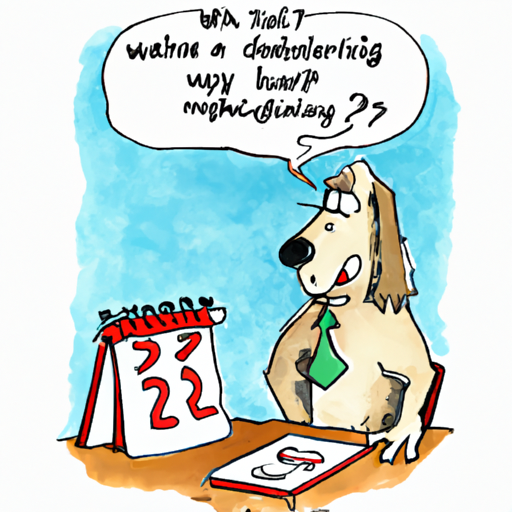As a caregiver for your four-legged friend, you’ve probably found yourself asking this question. Let’s delve into this topic to help you understand your canine companion a little better. We’ll cover everything from the basics of canine reproduction, the differences between males and females, and common misconceptions.
Understanding Canine Reproduction
Unlike humans, dogs don’t have a menstrual cycle. Instead, they have what’s known as an estrous cycle. Female dogs typically go into heat, or estrus, twice a year, although this can vary depending on the breed and individual dog.
However, what about male dogs?
The short answer is that male dogs do not go into heat. Unlike female dogs, their reproductive cycle isn’t cyclical. They’re capable of conceiving at any time after they reach sexual maturity, which is around six months to a year old, depending on the breed.
Yet, they do experience fluctuations in hormone levels and sexual behavior. This is tied more to the availability of a female in heat rather than a cycle of their own.
The Role of Testosterone
Testosterone plays a crucial part in male dog behavior. Here are some key points:
- Testosterone levels rise when a male dog reaches sexual maturity.
- It influences behaviors such as mounting, marking territory, and aggression.
- The levels remain fairly consistent throughout the dog’s life.
Male dogs can sense when a female dog is in heat due to pheromones the female releases. This can lead to increased restlessness and aggressive behavior in the male dog as its testosterone levels rise in response.
Common Misconceptions About Male Dogs and Heat
Many people believe that male dogs also go into heat, but this isn’t accurate. Here are a few common misconceptions:
- Misconception 1: Male dogs have heat cycles like females.
- Misconception 2: Neutering a male dog will completely eliminate sexual behaviors.
- Misconception 3: Male dogs only become sexually active when a female is in heat.
The Impact of Neutering
Neutering, or castration, involves the surgical removal of a male dog’s testicles. This procedure has several effects on a dog’s behavior and physical health:
- Reduces testosterone levels, which can decrease aggressive and territorial behaviors.
- Eliminates the dog’s ability to reproduce.
- May reduce the risk of certain health issues, such as testicular cancer and prostate problems.
However, it’s important to note that neutering doesn’t completely eliminate sexual behaviors. Even after being neutered, some male dogs may still show interest in females in heat and exhibit mating behaviors.
Coping with a Male Dog’s Sexual Behavior
As a caregiver, dealing with a male dog’s sexual behavior can be challenging. Here are some strategies that may help:
- Training: Reinforce positive behaviors and discourage negative ones.
- Exercise: Regular physical activity can help reduce restlessness and aggression.
- Neutering: If your dog’s behavior becomes a problem, discuss the pros and cons of neutering with your vet.
Frequently Asked Questions
Q: At what age do male dogs become sexually mature?
A: Male dogs usually become sexually mature between six months to a year old, depending on the breed.
Q: Do neutered male dogs stop showing sexual behavior?
A: Neutering reduces but does not completely eliminate sexual behaviors. Some neutered male dogs may still show interest in females in heat.
Q: Can male dogs sense when a female is in heat?
A: Yes, male dogs can sense when a female dog is in heat due to the pheromones she releases.
Understanding your male dog’s behavior can be a complex task, but with the right knowledge and patience, you can navigate this journey with ease. Always remember to consult with a veterinarian if you have any concerns or questions.



